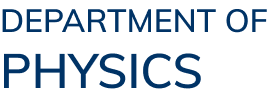Markov State Model is applied to colloidal diffusion systems with 2D periodic and random potential landscape. Robust Perron clustering analysis (PCCA+) works well for identifying potential wells. Energy barrier hight between wells are obtained from transition rate matrix. The distribution of energy barrier height agrees well with that from Boltz-mann distribution of directly population probability histogram. Without direct trajectory sampling on the peak of barrier, we can still evaluate the barrier height accurately.
The free diffusion of proteins on live cell membrane are modulated by their local cellular context on the membrane, intra-cellularly and extra-cellularly. We use extracellular microgroove patterning to control the spatial distribution of adhesion complexes on the basal membrane of muscle cells and evaluated the effects of the topographic patterning on the diffusion dynamics of AchRs. The movement of AchRs is largely restricted within the microgroove aligned adhesion protein patterns. We proposed that the aligned adhesion proteins form physical barriers and spatial guidance to the free diffusion of AchRs.
